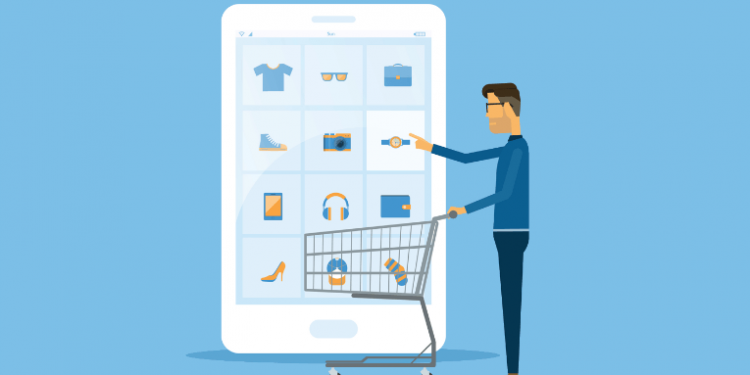Everyone knows about ecommerce. Brands who aren’t selling on ecommerce sites and marketplaces already also know that it’s the “final frontier” for success today. Consumers have even come to prefer online shopping over brick-and-mortar in most cases. Gone are the days when shopping on eBay or Amazon was a thing of novelty or “early adoption.” Today, ecommerce is an indispensable part of the global sales framework.
Covid-era trends have accelerated all the ecommerce forecasts from just a year ago. In 2021, global online sales will reach 22% of all retail sales (vs. 14% in 2019).
That’s almost a quarter of consumer purchases.
As the name “ecommerce” suggests (which stands for electronic commerce, if you never thought about it), technology is an integral part of trends in ecommerce. It’s what enables the industry to exist, and it’s how the industry responds to competition and shifting customer expectations.
Ecommerce technology includes mobile device tech, electronic funds tech, supply chain management solutions, internet marketing, electronic data interchange, and other software solutions that respond to specific pain points of ecommerce brands. This technology has done a lot to shape what’s possible in ecommerce.
In some cases, this technology has done more than just responding to the industry’s pain points. It’s actually shaped different parts of the ecommerce consumer experience. For example, product listings have changed radically from the day a book was first sold on Amazon. Now, tech innovations have enabled changes to listings that make brands more competitive and provide futuristic “wow” experiences in an increasingly hard-to-impress market.
Keep reading to learn what technology has changed in ecommerce product listings, and what a brand should do about it.
1.Augmented Reality (AR) in Product Listings
AR used in ecommerce has been a game-changer. In the face of worldwide lockdowns during waves of Covid-19, billions of consumers were challenged by decisions to buy products online that they would prefer to test or try in stores.
AR came in to help close the gap of the buyer experience in online vs. offline sales. Using AR, customers can preview products and superimpose them into the intended environment or virtually “try” them on. This helps pick the right product the first time around, significantly reducing returns. It’s also something that few consumers will forget if they interact with an innovative AR tool embedded in a product listing, which makes it great for a brand’s image.
2.Virtual Reality Transforming Ecommerce
The rise of virtual reality (VR) technology has brought many of the same benefits seen with AR. With listings featuring virtual showrooms, interactive manuals, and more, VR has added a new layer of product data to online listings that will continue to enhance the user experience.
About 77% of shoppers abandon their carts on ecommerce shops and marketplaces, indicating that even with the boom of ecommerce in 2020 brands still need to do a lot to convince consumers to hit that final “buy” button.
VR tech provides an enhanced experience that motivates consumers to purchase. Giving consumers the chance to visualize products or explore virtual storerooms has further closed the gap between the brick-and-mortar shopping experience and the ecommerce reality we all live in today. Development continues to fly fast as more SaaS solutions for independently-powered VR integrations are made available to ecommerce brands.
With AR and VR coupled together, there’s little a brand can’t provide through rich product listings.
3. Multichannel Strategies Push Enriched Content Optimization Technologies
Multichannel ecommerce sales is now a fundamental strategy for brands. Whether or not a brand sells in an in-store retail environment, even online there must be multiple channels employed to capture consumers’ attention.
Consequently, brands have had to adopt complex data optimization processes to position product data (from SKUs and descriptions to product photos and videos) for multiple platforms. For example, the description of a product won’t be the same on Amazon as it is on a Shopify storefront because the field character length limits, search algorithms, and media requirements are different.
To support this new multichannel world, SaaS technology has replied with product information management software (PIM) and e-procurement solutions that were designed with the new ecommerce norms in mind and enable brands to aggregate, optimize store, and export data in a central location where all teams can access it. The eradication of spreadsheets (and product data errors with them) has meant that product listings are now more competitive. Because it’s finally practical to optimize each listing with an exacting strategy, the brands that are doing so have attracted more consumers and maximized conversions.
3. Everything is Mobile
As a final note, the reality that all tech today is developed with mobile experiences in mind has further altered product listings. In 2020, mobile retail revenue passed $339 billion, up from $207 in 2018. This comes as no surprise since consumers today are glued to their smartphones.
As a result, product listings and website user experience (UX) are being optimized for mobile. Especially with the integration of better product photos and videos (not to mention AR and VR tools), this means that product listings are favoring mobile design more than ever. Bear this in mind with any strategic listings decisions you make.
Final Words
Ecommerce product listings are under-optimized in almost every case. The technology and the possibilities discussed in this article are proof because by simply taking action, a brand will immediately head the pack. The majority are just “scraping by” with basic product listings that are often incongruent channel-to-channel due to the complex management of product data.
The good news is that these technologies are ripe for implementation by brands ready to take listings to a new level of engagement and conversion.
Give these technologies a try to come out ahead. Coupled with solid branding paradigms for 2021, they will define your brand as the one ready to impress consumers in an unforgettable way.
Follow Techdee for more informative articles.





